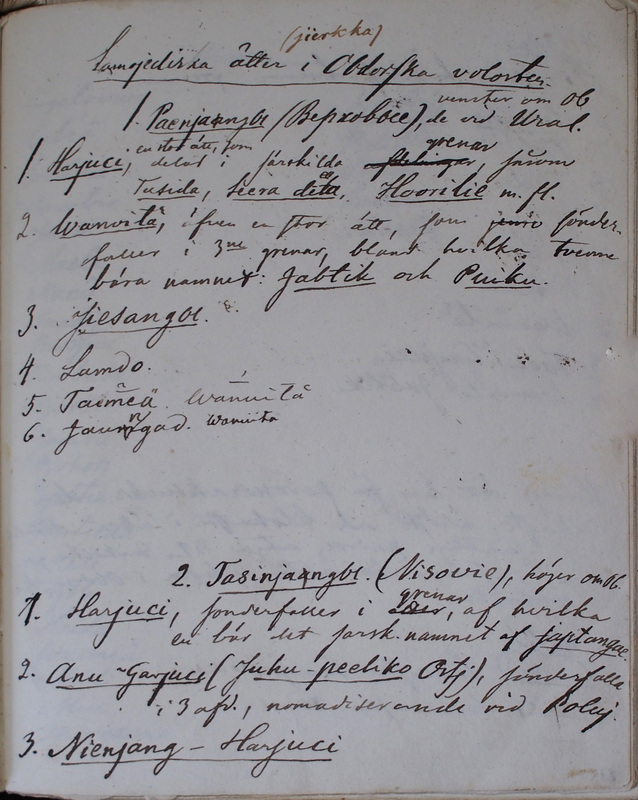Ethnographiska, historiska och statistiska anmärkningar. 256
Title
Ethnographiska, historiska och statistiska anmärkningar. 256
Description
| Samojediska ätter
(jierkka)
i Obdorska volostenTN еркар. See [роды].
|
Samoyed families (jierkka) in the Obdorsk volost |
|
I.
Paenjaangы
(Верховые), de vid Ural. venster om ObTN пэʹ яңгы ʻthose who live in the stone land’, corresponds to the Ru kamennye ‘stony’. They both refer to Nenets moving on the slopes of the Urals and the Yamal Peninsula. (Alekseev (ed.) 2010: 42, 311). See [tasinjaangy]; [nizovye].
|
I. Paenjaangы (upper), in the Urals, left bank of the Ob
|
|
II.
Tasinjaangы
(Nisovie), höger om ObTN тасиʹ яңгы ʻthose who live on the lowlands’ corresponds to the Russian expression nizovye ‘lower’. They both refer to Nenets living on the lowlands of the Rivers Nadym, Taz, and Pur and the shores of the Taz Gulf up to the River Yenisei. (Alekseev (ed.) 2010: 242, 311). See [paenjaangy]; [nizovye].
en bär det särk[ildta]. namnet af Japtongae.
Ябтоңэ, Яптунай, Яптуне, fe. Ябтойʹ. According to Chomič, Ябтоңэ is a branch of the fratry of Харючи. (Tereščenko 2003: 824; Chomič 1976: 104)
|
II. Tasinjaangы (lower), the right bank of the Ob
|
[[the page is upside down]]

